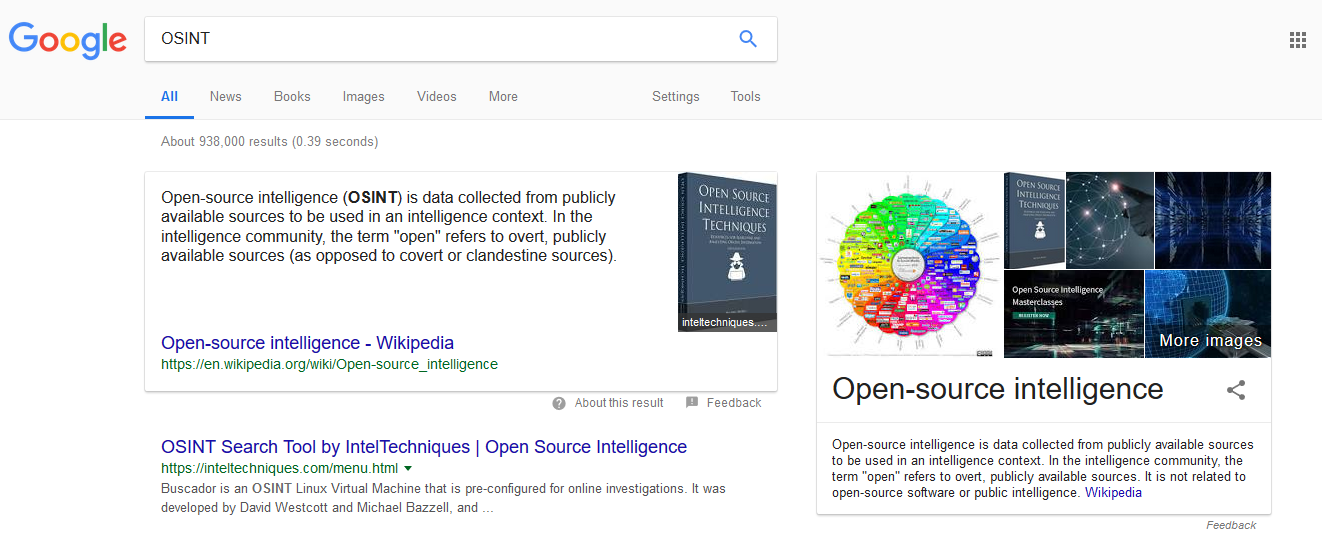I know what you’re thinking, “not another resource for OSINT.” This post is more focused on helping people just getting started with open source intelligence (OSINT).
This is the second of several resource posts I’d like to do that point people to some getting started resources. This is not meant to be an exhaustive list. Instead I’d like to highlight some of the resources I have found useful and use on a regular basis. This is meant more as a gateway into the deep field of OSINT.
Websites:
Google is the primary tool I use for doing searches. Learning how to Google Dork is one of the most useful skills to have in security, not just OSINT. IntelTechniques has a lot of useful tools for doing specific searches. OSINT Framework has over 1200 tools available for OSINT. Plenty of opportunity to fall into rabbit holes.
People:
These are all people I’ve interacted with regularly or had on the podcast previously to talk about OSINT and threat intelligence.
Training:
Justin Nordine’s course
I took SANS SEC487 earlier this year and it is exhaustive. Lots of information, tools, and methodology in the course. I also recently took Social Engineer’s Advanced OSINT course at DerbyCon. It’s a shorter and much more focused course. It provides opportunities to play with certain techniques (Google Dorking) and tools (Maltego). Recently, Justin told me he was doing an OSINT course. Follow him on Twitter (above) to keep up with dates and links.
Podacsts:
I think this is the easiest way to capture all the podcast content. Plus, it keeps this blog post a little shorter and more streamlined. I don’t want this to be a super long post. The links I’ve provided in this post will lead you to other resources, tools, and ideas in OSINT.
How to get started with OSINT
Something to think about is use cases. Penetration testers use OSINT for assessing and organizations security aptitude. Investigators use it to track down people and companies. Incident responders use it to track malicious domains. Threat hunters use it to identify threats and risks to an organization. Those are some of the things I’ve used OSINT for working on a blue team. I’ve heard of use cases for police, insurance companies, and organizations looking to make acquisitions.
Methodology is also really important. It’s what keeps us from jumping too far down a rabbit hole. Dutch OSINT Guy has a good post on methodology. It’ll take practice and experience, so really just go do it and learn.
This blog post first appear on Exploring Information Security

